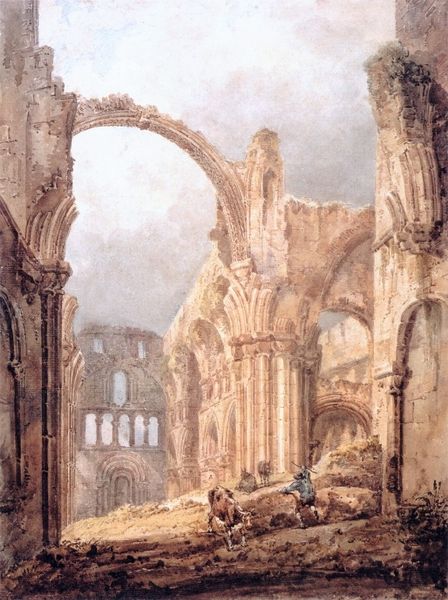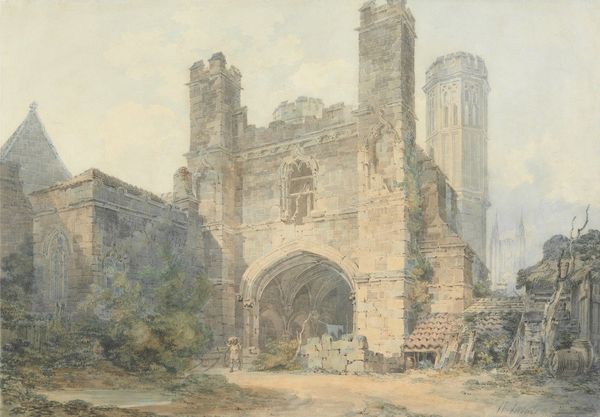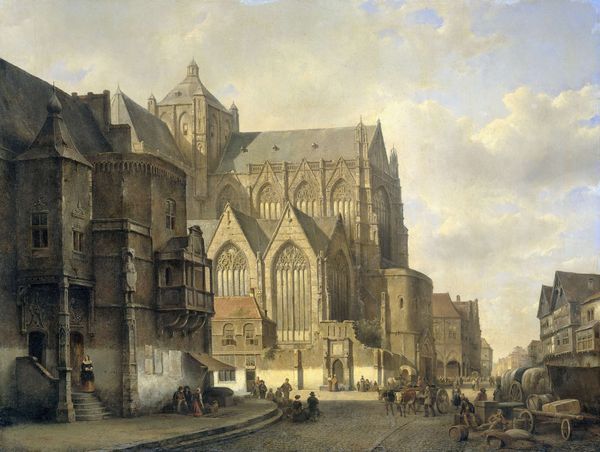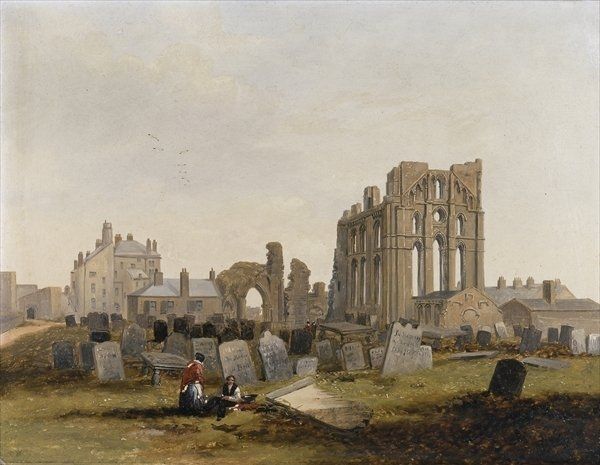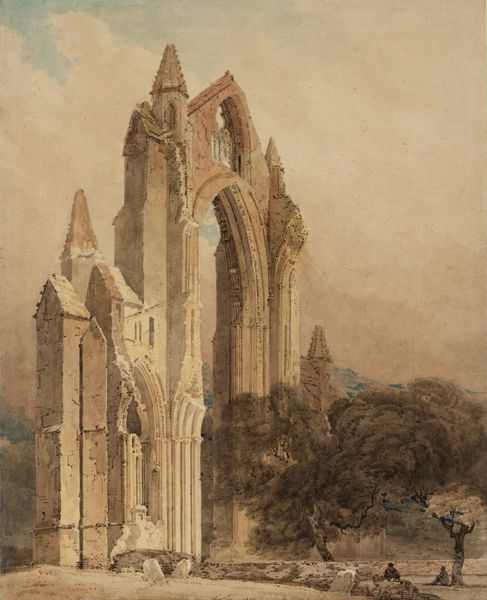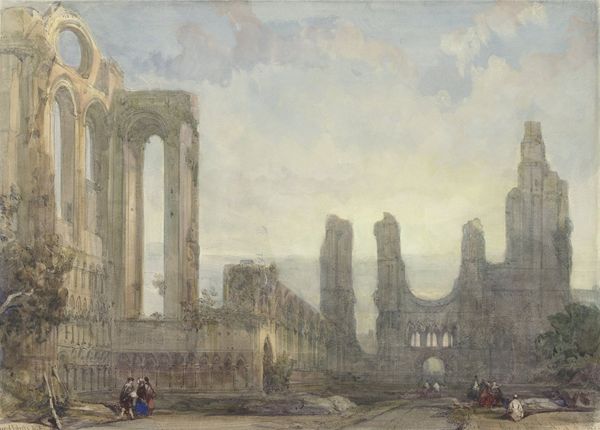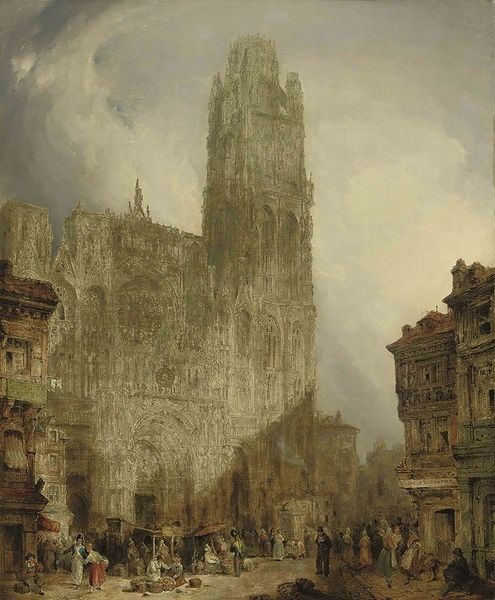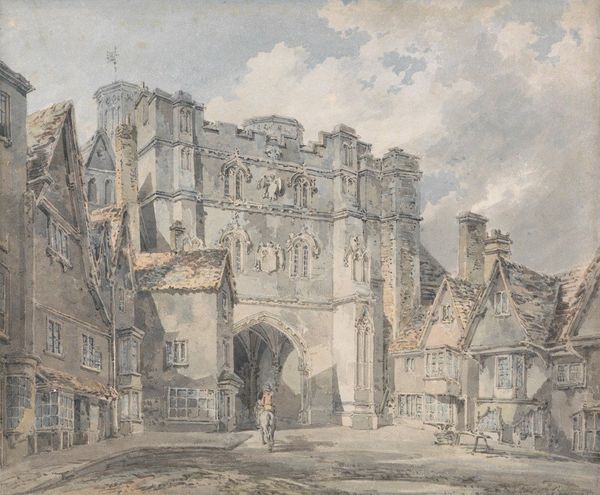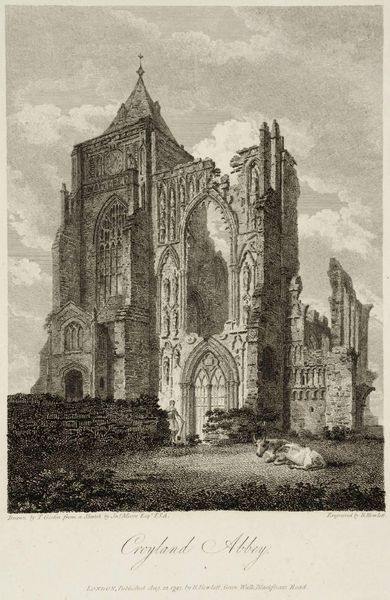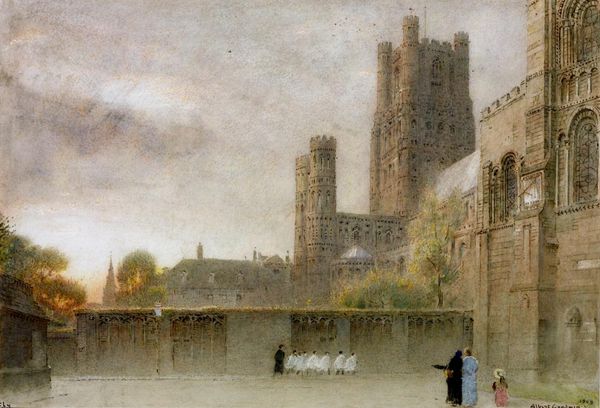
Dimensions: support: 305 x 394 mm
Copyright: CC-BY-NC-ND 4.0 DEED, Photo: Tate
Editor: Samuel Prout's "The Chapel of St Joseph of Arimathea, Glastonbury, from the South-East" captures the chapel's ruins. It feels melancholic, almost romantic, in its depiction of decay. What do you see in this piece? Curator: I see a deliberate engagement with the picturesque, but also a commentary on institutional power. Consider how the dissolution of the monasteries under Henry VIII directly led to the ruin we see. Prout isn't just painting pretty decay; he's showing the aftereffects of significant socio-political upheaval. Editor: So, you’re saying the ruin isn’t just aesthetic, it's a symbol? Curator: Precisely. The chapel's ruin becomes a potent symbol of vanished authority and shifting power dynamics. It prompts us to consider how such images circulated and were consumed, shaping public understanding of history and national identity. Editor: That gives me a lot to think about in terms of the image's role then. Curator: Indeed, it reveals the public role of art.


